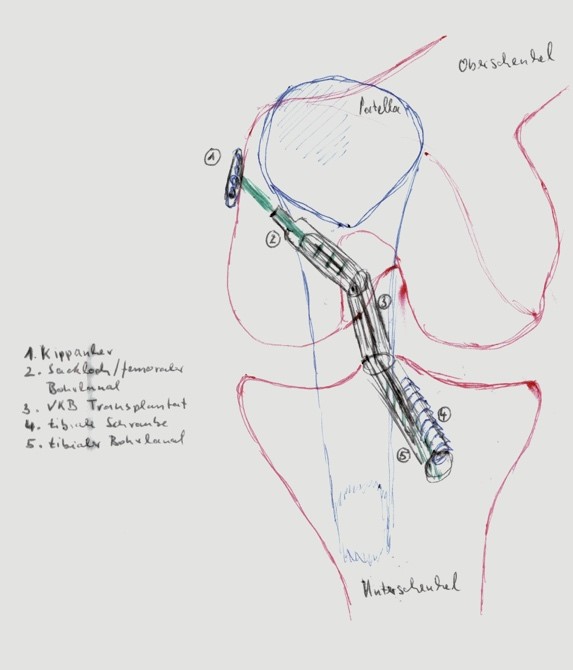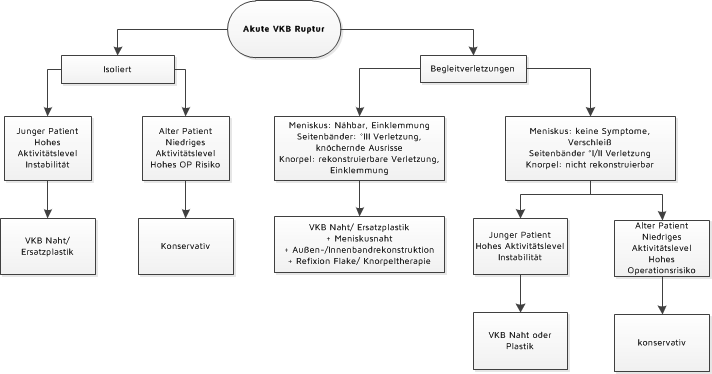(Cruciate) Ligament Injury
The many, new, minimally-invasive arthroscopic treatment options have led to massive change in recent years. Early treatment of multi-ligament injuries with direct suturing and reinforcement with artificial ligaments have prevailed over conservative or delayed treatment. A lot has also changed within cruciate ligament surgery. Today we speak of personalised cruciate ligament surgery. This means, among other things, that the respective transplant used is also adapted to the injury. Different endogenous tendons, e.g. the quadriceps tendon, the semitendinosus tendon, the patellar tendon, and others can be used as grafts. Possible concomitant pathologies are also included in a dedicated treatment concept from the outset, and influence the therapy strategy. Waiting or conservative therapy hardly play a role for younger, active patients. But older patients can still benefit from ligamentoplasty. While isolated anterior cruciate ligament injuries now receive accelerated follow-up treatment, additional injuries slow down follow-up treatment to varying degrees.
Anterior cruciate ligament injury
Together with the posterior cruciate ligament, the anterior cruciate ligament is a central stabiliser within the knee joint. It stabilises the lower leg against increased sliding forward and internal rotation of the lower leg, and thus prevents consequential damage due to increased mobility. This can result in cartilage and meniscus damage. With a frequency of 46/100,000 patients, this injury is not uncommon. Various prevention programmes, which are also similar to follow-up treatment after surgical treatment of the cruciate ligament injury, have been able to show a reduction in the extent of injury.
Inner ligament injuries of the knee
Inner ligament damage is a common injury to the knee joint. When an injury occurs, other damage to the knee is often found, such as meniscus or cruciate ligament injuries. The medial collateral ligament (MCL) consists of three different parts with different functions. Essentially, the medial collateral ligament stabilises the knee against so-called valgus stress. Injuries are divided into partial and complete tears. Partial tears are treated conservatively, i.e. without surgery, due to the excellent healing tendency. If necessary, splint treatment can be used. Complete ruptures can also be treated conservatively if the ends of the residual limb are adjacent to each other. However, this must be decided on an individual basis. In cases of severe instability and dislocated ligament stumps, surgery is recommended. Various surgical procedures are available.



